VPS13D promotes peroxisome biogenesis
- PMID: 33891012
- PMCID: PMC8077185
- DOI: 10.1083/jcb.202001188
VPS13D promotes peroxisome biogenesis
Abstract
The VPS13 gene family consists of VPS13A-D in mammals. Although all four genes have been linked to human diseases, their cellular functions are poorly understood, particularly those of VPS13D. We generated and characterized knockouts of each VPS13 gene in HeLa cells. Among the individual knockouts, only VPS13D-KO cells exhibit abnormal mitochondrial morphology. Additionally, VPS13D loss leads to either partial or complete peroxisome loss in several transformed cell lines and in fibroblasts derived from a VPS13D mutation-carrying patient with recessive spinocerebellar ataxia. Our data show that VPS13D regulates peroxisome biogenesis.
© 2021 Baldwin et al.
Figures
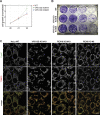
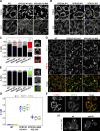


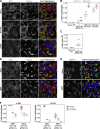
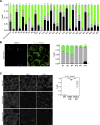
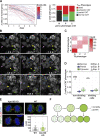

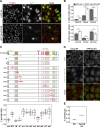
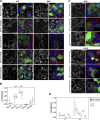


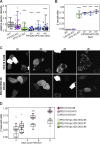
Similar articles
-
VPS13D bridges the ER to mitochondria and peroxisomes via Miro.J Cell Biol. 2021 May 3;220(5):e202010004. doi: 10.1083/jcb.202010004. J Cell Biol. 2021. PMID: 33891013 Free PMC article.
-
VPS13D interacts with VCP/p97 and negatively regulates endoplasmic reticulum-mitochondria interactions.Mol Biol Cell. 2021 Aug 1;32(16):1474-1486. doi: 10.1091/mbc.E21-03-0097. Epub 2021 Jun 16. Mol Biol Cell. 2021. PMID: 34133214 Free PMC article.
-
Overexpression of PEX14 results in mistargeting to mitochondria, accompanied by organelle fragmentation and clustering in human embryonic kidney cells.Biochim Biophys Acta Mol Cell Res. 2024 Aug;1871(6):119754. doi: 10.1016/j.bbamcr.2024.119754. Epub 2024 May 16. Biochim Biophys Acta Mol Cell Res. 2024. PMID: 38762172
-
Peroxisome biogenesis, membrane contact sites, and quality control.EMBO Rep. 2019 Jan;20(1):e46864. doi: 10.15252/embr.201846864. Epub 2018 Dec 10. EMBO Rep. 2019. PMID: 30530632 Free PMC article. Review.
-
Peroxisome biogenesis and peroxisome biogenesis disorders.FEBS Lett. 2000 Jun 30;476(1-2):42-6. doi: 10.1016/s0014-5793(00)01667-7. FEBS Lett. 2000. PMID: 10878247 Review.
Cited by
-
Organelle Membrane Extensions in Mammalian Cells.Biology (Basel). 2023 Apr 27;12(5):664. doi: 10.3390/biology12050664. Biology (Basel). 2023. PMID: 37237478 Free PMC article. Review.
-
Control of mitochondrial dynamics and apoptotic pathways by peroxisomes.Front Cell Dev Biol. 2022 Sep 9;10:938177. doi: 10.3389/fcell.2022.938177. eCollection 2022. Front Cell Dev Biol. 2022. PMID: 36158224 Free PMC article. Review.
-
Sharing the wealth: The versatility of proteins targeted to peroxisomes and other organelles.Front Cell Dev Biol. 2022 Sep 26;10:934331. doi: 10.3389/fcell.2022.934331. eCollection 2022. Front Cell Dev Biol. 2022. PMID: 36225313 Free PMC article. Review.
-
Mitochondrial fission, integrity and completion of mitophagy require separable functions of Vps13D in Drosophila neurons.PLoS Genet. 2021 Aug 12;17(8):e1009731. doi: 10.1371/journal.pgen.1009731. eCollection 2021 Aug. PLoS Genet. 2021. PMID: 34383748 Free PMC article.
-
Sec23IP recruits VPS13B/COH1 to ER exit site-Golgi interface for tubular ERGIC formation.J Cell Biol. 2024 Dec 2;223(12):e202402083. doi: 10.1083/jcb.202402083. Epub 2024 Oct 1. J Cell Biol. 2024. PMID: 39352497 Free PMC article.
References
-
- Abadi, M., Agarwal A., Barham P., Brevdo E., Chen Z., Citro C., Corrado G.S., Davis A., Dean J., Devin M., et al. . 2016. TensorFlow: large-scale machine learning on heterogeneous distributed systems. http://tensorflow.org
-
- Anding, A.L., Wang C., Chang T.K., Sliter D.A., Powers C.M., Hofmann K., Youle R.J., and Baehrecke E.H.. 2018. Vps13D encodes a ubiquitin-binding protein that is required for the regulation of mitochondrial size and clearance. Curr. Biol. 28:287–295.e6. 10.1016/j.cub.2017.11.064 - DOI - PMC - PubMed
Publication types
MeSH terms
Substances
Grants and funding
LinkOut - more resources
Full Text Sources
Research Materials

